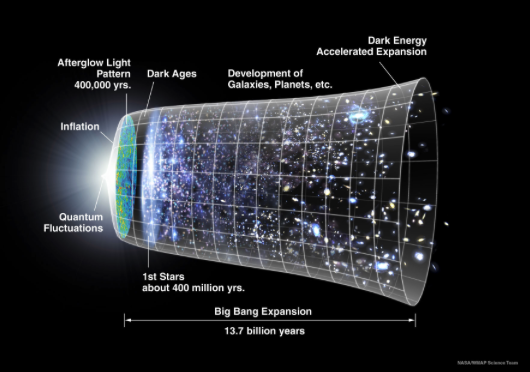
Credit: WMAP
The very earliest universe was so hot that no matter particles existed and hydrogen was ionized. As the universe cooled, protons and electrons combined into neutral hydrogen and the full range of complex particles we see today became possible. Then, the dark ages of the Universe followed. During that time, matter was transparent to radiation and transformed to neutral gas. The first stars and galaxies had not been formed, yet. The gas remained neutral for the next few hundred million years, until the first stars and quasars formed from gravitational collapse and the epoch of re-ionization began. This transition occurred when photons from these sources were energetic enough to ionize hydrogen again. The exact sources/mechanisms that were responsible for this re-ionization is still not fully answered.
Dwarf galaxies are currently the primary candidate source of ionizing photons during the re-ionization epoch. Recently, a team of astronomers studied the star-forming dwarf galaxy J0925+1403 and found an unusually high ionization state in the gas near the galaxy’s star-forming regions. This suggests, that stars may make more ionizing radiation than can be absorbed by the surrounding gas. This is the fourth detection of ionizing photons, but the importance of this observation is that this galaxy has the highest escape fraction yet measured locally. About 8%, compared to roughly 1-3% escape fraction of other nearby galaxies.
However, this study involves a single galaxy and is uncertain whether this galaxy has the typical properties of a population and is representative of galaxies in the re-ionization era. As the authors emphasize, larger studies will allow us to draw strong conclusions and give definite answers to this cosmological question.
Source: Nature
